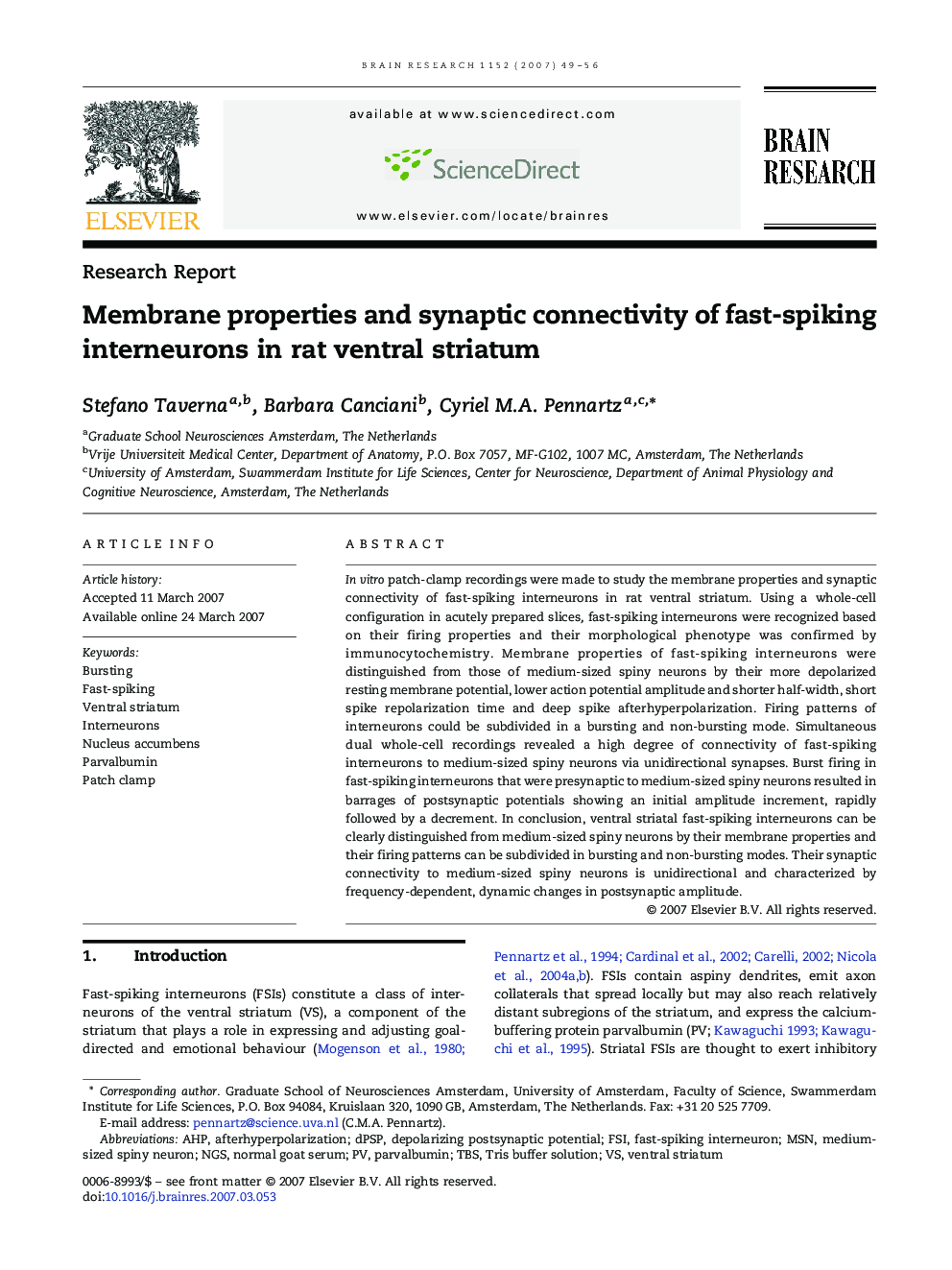| Article ID | Journal | Published Year | Pages | File Type |
|---|---|---|---|---|
| 4330987 | Brain Research | 2007 | 8 Pages |
In vitro patch-clamp recordings were made to study the membrane properties and synaptic connectivity of fast-spiking interneurons in rat ventral striatum. Using a whole-cell configuration in acutely prepared slices, fast-spiking interneurons were recognized based on their firing properties and their morphological phenotype was confirmed by immunocytochemistry. Membrane properties of fast-spiking interneurons were distinguished from those of medium-sized spiny neurons by their more depolarized resting membrane potential, lower action potential amplitude and shorter half-width, short spike repolarization time and deep spike afterhyperpolarization. Firing patterns of interneurons could be subdivided in a bursting and non-bursting mode. Simultaneous dual whole-cell recordings revealed a high degree of connectivity of fast-spiking interneurons to medium-sized spiny neurons via unidirectional synapses. Burst firing in fast-spiking interneurons that were presynaptic to medium-sized spiny neurons resulted in barrages of postsynaptic potentials showing an initial amplitude increment, rapidly followed by a decrement. In conclusion, ventral striatal fast-spiking interneurons can be clearly distinguished from medium-sized spiny neurons by their membrane properties and their firing patterns can be subdivided in bursting and non-bursting modes. Their synaptic connectivity to medium-sized spiny neurons is unidirectional and characterized by frequency-dependent, dynamic changes in postsynaptic amplitude.
